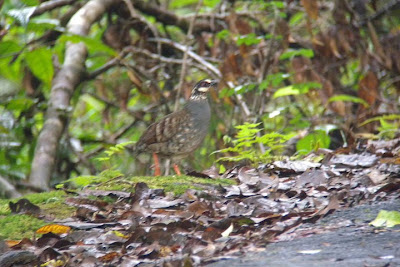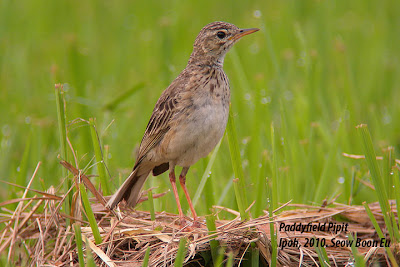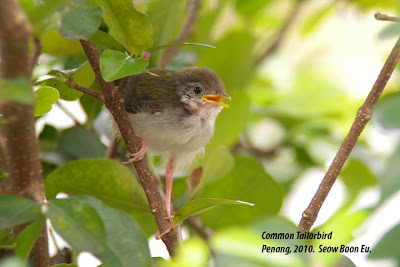I spent 3 days in Cameron Highlands from 17th to 19th April, stayed at Lutheran Mission Bungalow. Not many birds I had spotted as compared to last year, partly due to the rain during the day, and it was also a holiday in Perak state. Here are the birds that I digiscoped.
 |
| Malayan Patridges |
 |
Chestnut-capped Laughingthrush
|
 |
| Crested Serpent Eagle |
I had my first birding trip to Cameron Higlands from 4-6 July 2009, organized by the Selangor Bird Group. Here are the digiscoped pictures from last year visit.
 |
| Mountain Imperial Pigeon (a chicken size pigeon) |
 |
| Barred Cuckoo-Dove (Macropygia unchall) |
Cuckoo-Dove feathers, I do not know it is belong to which species, most probably is the Little Cuckoo-Dove. :
 |
| Large Niltava |
 |
Slaty-backed Forktail |
 |
Blue Whistling Thrush |
Besides wild birds, Cameron Highlands also has many beautiful mossy forests, these forests are also home to many montane flora and fauna species.
Therefore, to help to protect this pristine and fragile environment. Kindly visit this LINK to find out more about R.E.A.C.H, the environment awareness and protection organisation in Cameron Highlands.
Happy Birding and Digiscoping.













































